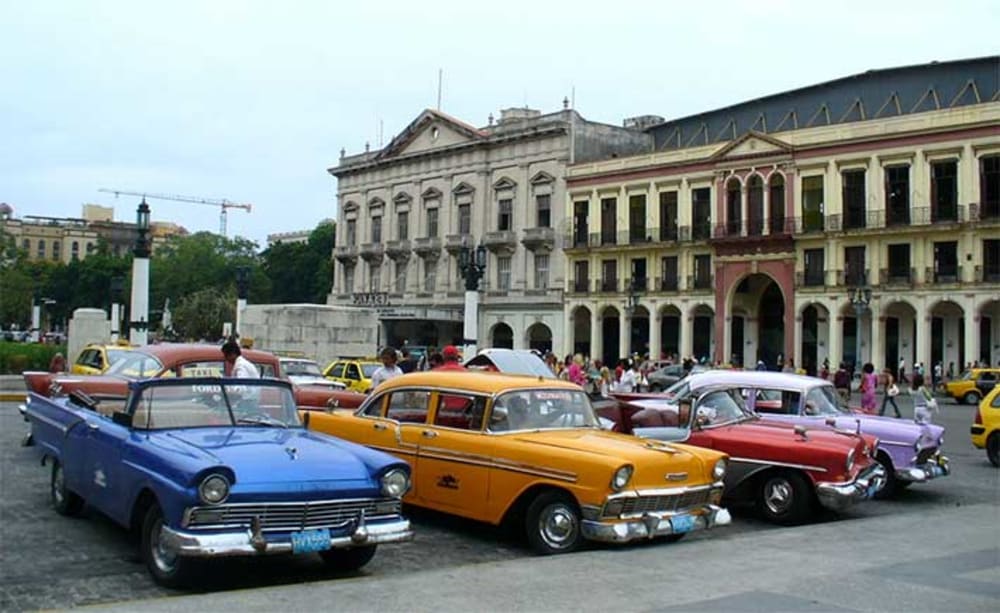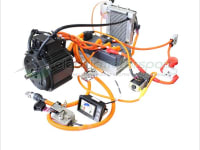Introduction
This program will collaborate with the skilled automotive technicians in Cuba to convert the hundreds of vintage American vehicles in the region from the 1950s to electric drivetrains, while maintaining their historic exterior bodies and interiors. Today most of these vehicles are operating on their 3rd or 4th gasoline or diesel engine drivetrains procured from Russia, Korea, and Japan. The program will also provide solar-based charging stations to supplement the intermittent electrical grid available in the target urban regions. Conversion of the vehicles, and assembly and installation of the solar infrastructure will be performed by local Cuban personnel, in conjunction with US collaborators. This will bring valuable training to Cuba while also reducing their dependency on foreign oil products.
The feasibility of converting the historic Chevys, Fords, Chryslers, Cadillacs, etc. in Cuba is fairly straightforward. The design of the primary electric drivetrain kits including lithium-based battery packs is taking place in the USA. The solar charging station design has also taken place in Silicon Valley. Vehicle specific mounting plates and wiring harnesses will be machined and assembled in Cuba where feasible. The vehicles in the urban areas of Cuba do not require extensive range, and have sufficient space to incorporate needed battery packs without diminishing rear trunk capacity substantially. The performance of electric drivetrains fits very well with the older American vehicles, as the electric motors have substantial torque to handle the heavier chassis and bodies of the 50-70 year old vehicles. Cuban automotive mechanics have proven over the past 50 years to have tremendous skills and ingenuity towards modification and preservation of these classic vehicles.
Financial Resources
Financial support including low-rate financing and subsidies for this endeavor will be available in part from domestic US and international aid and foundation sources focused on climate change, especially following commitments made by the developing world in the latest COP21 climate summit towards developing nations such as Cuba. Support by US aid sources would support goodwill generated through technical training and job growth for Cuba, and again, reduction in their dependency on foreign oil.
Technical Feasibility
The electric drivetrain components will be kitted here in the USA for shipment to Cuba in 20 foot shipping containers. The containers will be used locally in Cuba to house the solar charging stations.
Tech specs:
-88-150 kW AC induction motor
-28-72 kWh battery pack
-Solar charger station with 4-8 kW bifacial PV modules and integrated 20-40 kWh battery storage
-1 to 3 ea. Level 2 EVSE charge points at each station
-optional diesel generator for full hybrid autonomous operation
-optional grid tie when grid is available (even if intermittent)
Background
Our team has spent much of our time recently managing deployment of hybrid power systems in the developing world and is thus very familiar with working conditions in countries that have limited technology and manufacturing resources, but typically have motivated and skilled local workforces as is prevalent in Cuba.
Like this entry?
-
About the Entrant
- Name:Steve Wollenberg
- Type of entry:individual
- Software used for this entry:SketchUp, PVsyst
- Patent status:none








